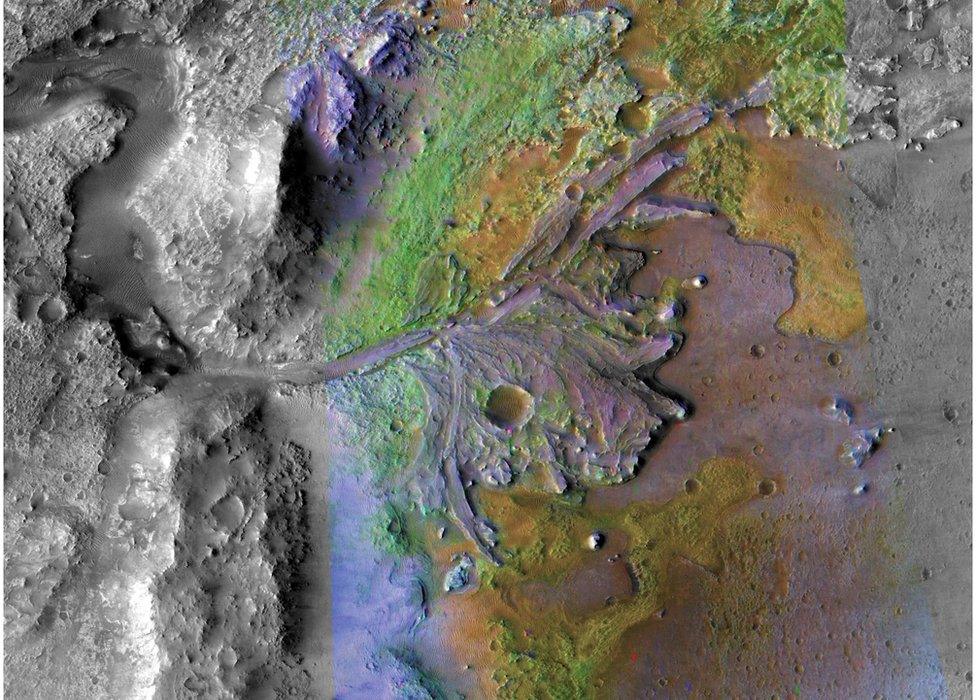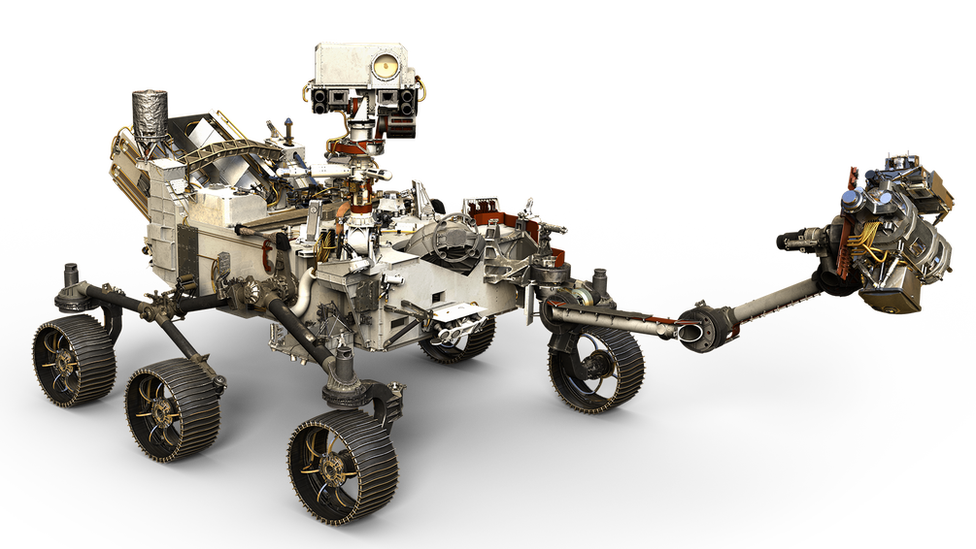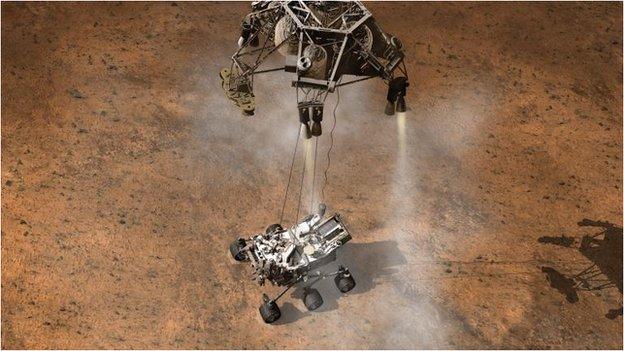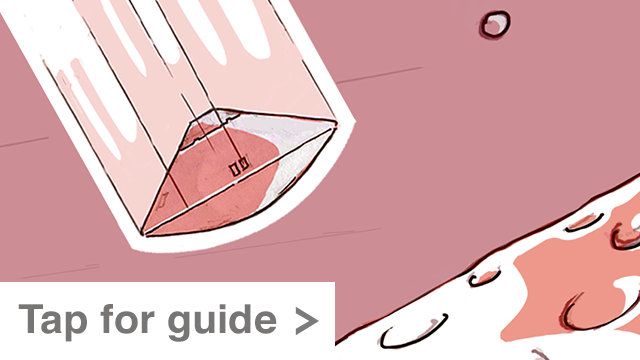Nasa 2020 robot rover to target Jezero 'lake' crater
- Published

Jezero Crater shows strong evidence from orbit of past water activity
The American space agency (Nasa) says it will send its 2020 Mars rover, external to a location known as Jezero Crater.
Nasa believes the rocks in this nearly 50km-wide bowl could conceivably hold a record of ancient life on the planet.
Satellite images of Jezero point to river water having once cut through its rim and flowed via a delta system into a big lake.
It is the kind of environment that might just have supported microbes some 3.5-3.9 billion years ago.
This was a period when Mars was much warmer and wetter than it is today.
What is so special about Jezero?
Evidence for the past presence of a lake is obviously a draw, but Ken Farley, the Nasa project scientist on the mission, said the delta traces were also a major attraction.
"A delta is extremely good at preserving bio-signatures - any evidence of life that might have existed in the lake water, or at the interface of the sediment and the lake water, or possibly things that lived in the headwaters region that were swept in by the river and deposited in the delta," he told reporters.
Jezero's multiple rock types, including clays and carbonates, have high potential to preserve the organic molecules that would hint at life's bygone existence.
The 500m-deep crater was chosen after a four-year consultation process with Mars scientists. In a straw-poll taken at the end of the most recent site-selection workshop, it came out the clear favourite. Nasa's administration has now endorsed the choice.
Jezero is sited just north of Mars' equator. It is named after a town in Bosnia-Herzegovina. In some Slavic languages the word "jezero" also means "lake".

The Mars 2020 rover is based on the design of the Curiosity robot
How does 2020 link to future missions?
Another of the robot's key objectives will be to select and "cache" in small canisters some rock samples that could, at a later date, be collected and returned to Earth labs for analysis.
Nasa is working with the European Space Agency (Esa) on this initiative, but exactly when the sample tubes might come home is uncertain.
Planning with Esa was at an early stage, said Thomas Zurbuchen, Nasa's science chief. "Depending on how the details come out, it could be in the early 2030s," he explained.

Artwork: The 2020 mission will again use a "Skycrane" to put the rover on the surface
Is the 2020 rover a copy of Curiosity?
The 2020 rover is based on the one-tonne Curiosity robot that the agency landed in Gale Crater in 2012. Curiosity has been a great success, and Nasa wants to repeat it. Using the same "template" also saves money; some equipment spares were left over from 2012.
That said, instrument-wise, the new vehicle is quite a bit different. Yes, it will again feature cameras, a robotic arm, a drill and a laser - but there is a new suite of sensors and analysis tools, and there is even an experiment to demonstrate how future astronauts might make oxygen on the Red Planet.
The new robot will use the same "Skycrane" technology that put Curiosity down with such great precision six years ago - but with an add-on. Engineers have developed an on-the-fly mapping system called Terrain-Relative Navigation which ought to bring even greater accuracy to the landing process.

What else can we look forward to on Mars?
Missions to Mars can only launch inside a tight time window due to the alignment of the planets.
The 2020 venture will leave Earth in the July/August of that year and should land on 18 February 2021.
"Nasa has a long and successful track record at Mars. Since Mariner 4 flew by Mars in 1965, we've orbited, we've landed and we've roved across the surface of the Red Planet," said Lori Glaze, the acting director of Nasa's planetary science division. "And we've got another opportunity to improve our track record a week from today when we land InSight on the surface. We're all looking forward to that."
Unlike 2020 and Curiosity, Insight is a static lander, external. It will be the first mission dedicated to "looking inside" the planet. It will use seismometers to listen for "Marsquakes", to help build a picture of Mars' internal structure.
Esa is sending a rover to Mars in 2020 also. European scientists recently selected Oxia Planum as its destination. Satellite imagery suggests, as with Jezero and Gale, this ancient terrain came into prolonged contact with water.
Jonathan.Amos-INTERNET@bbc.co.uk, external and follow me on Twitter: @BBCAmos, external
